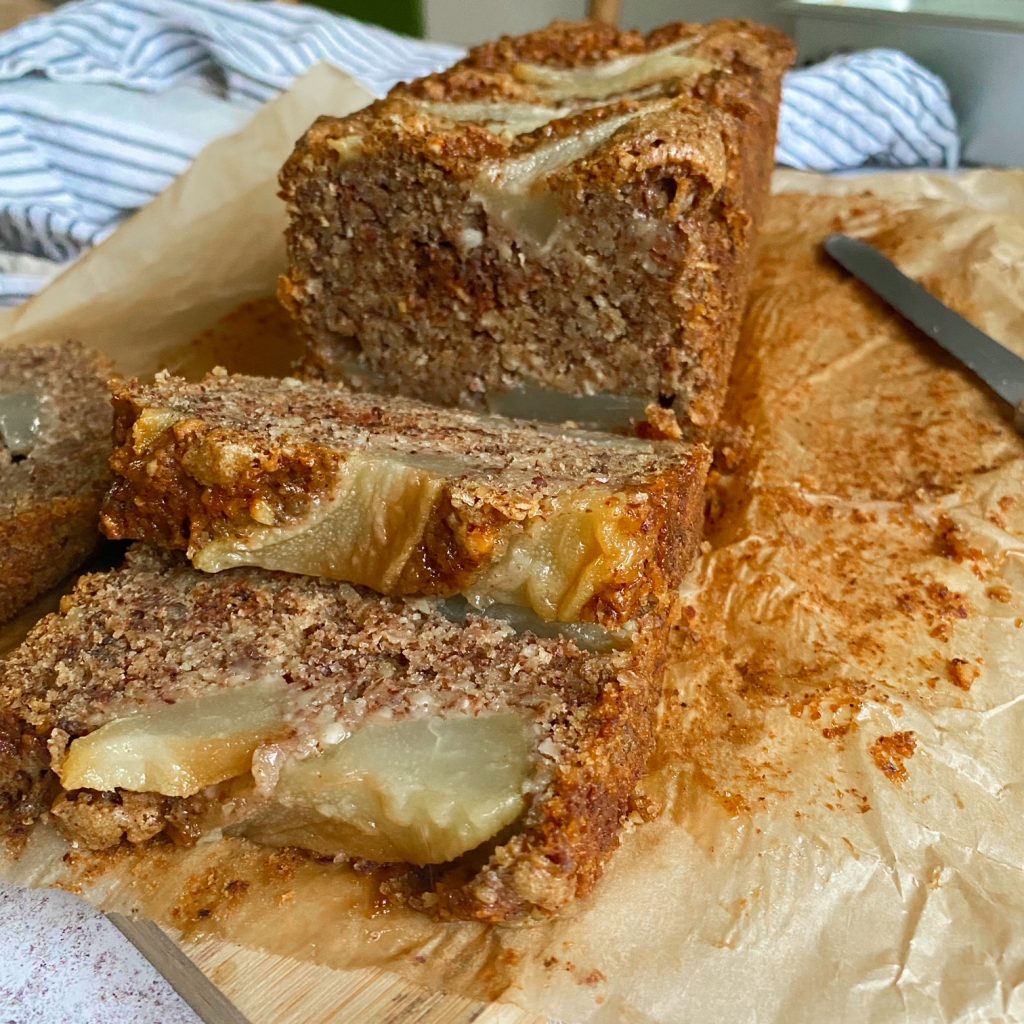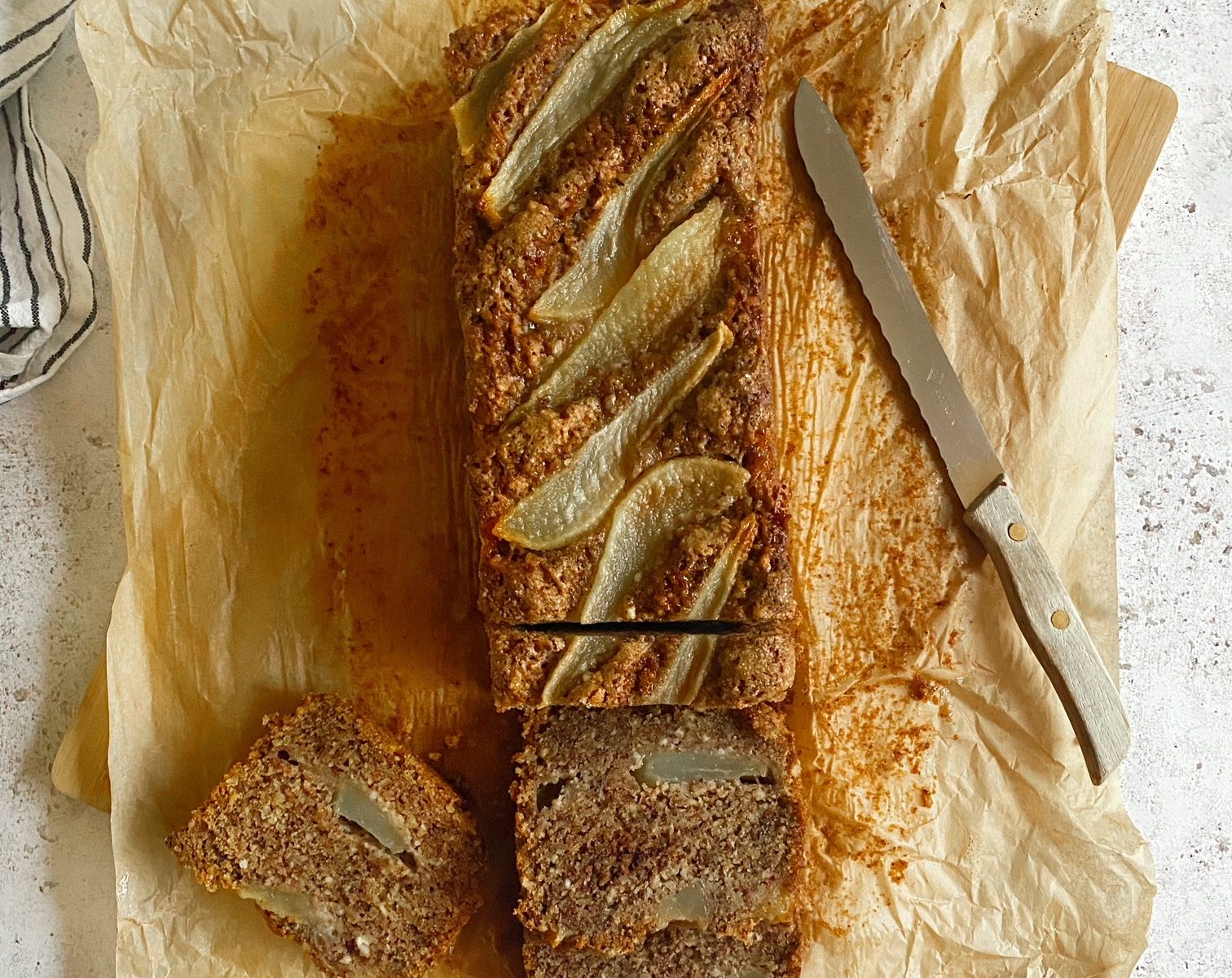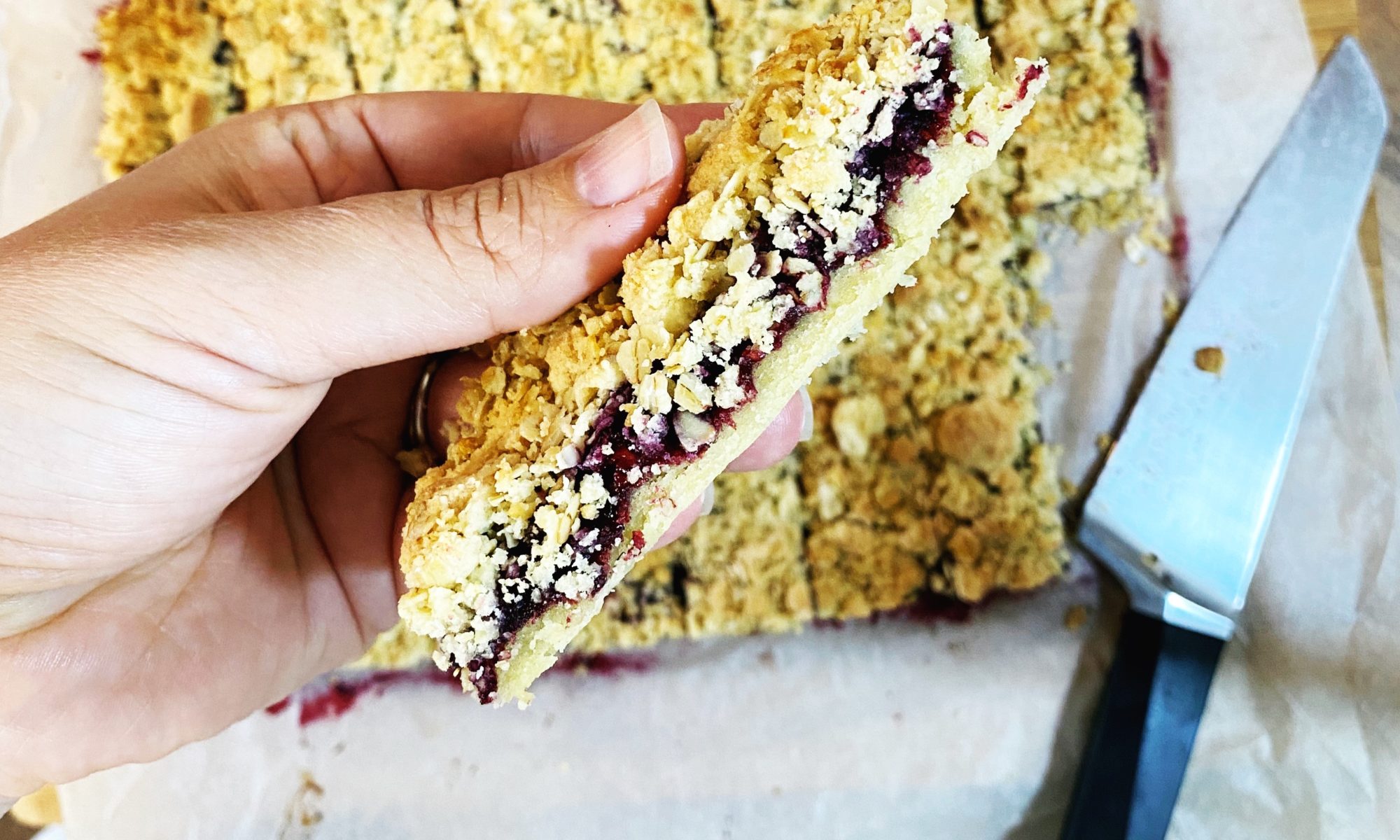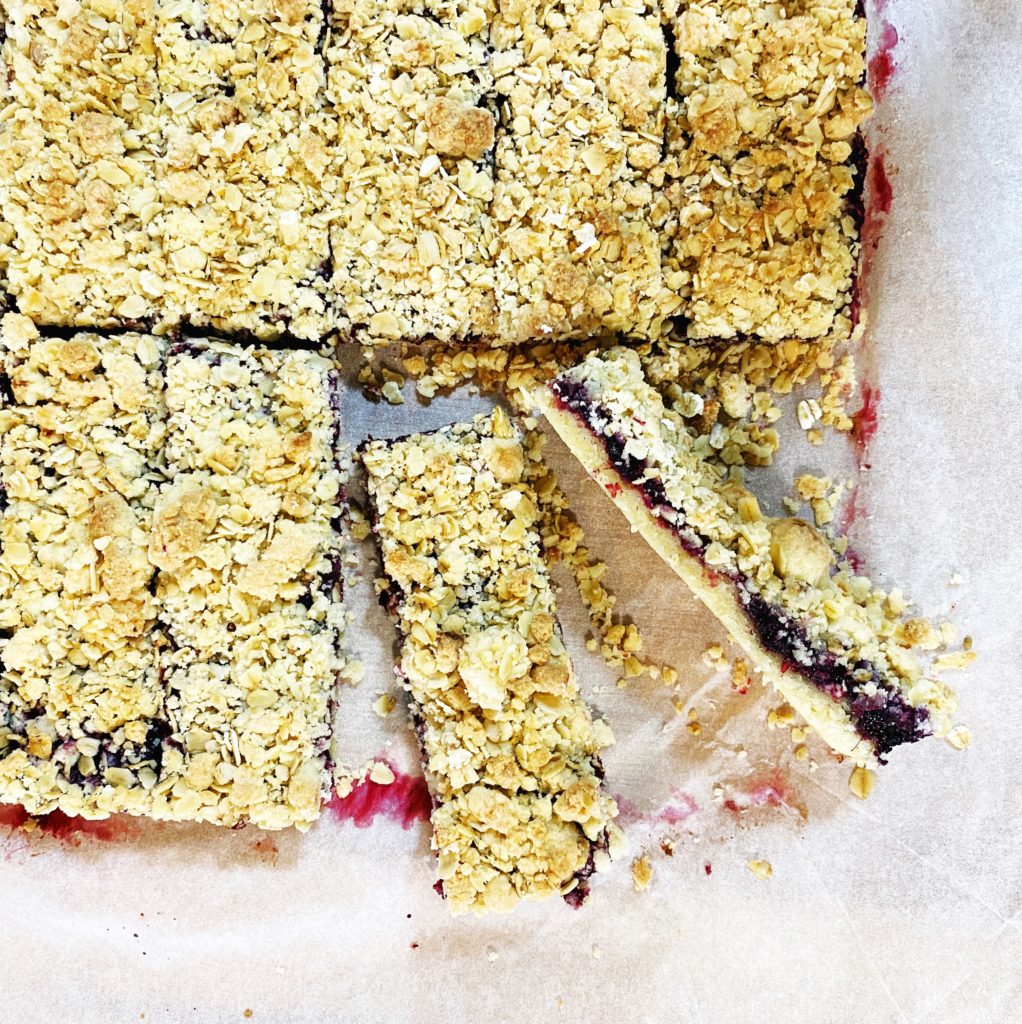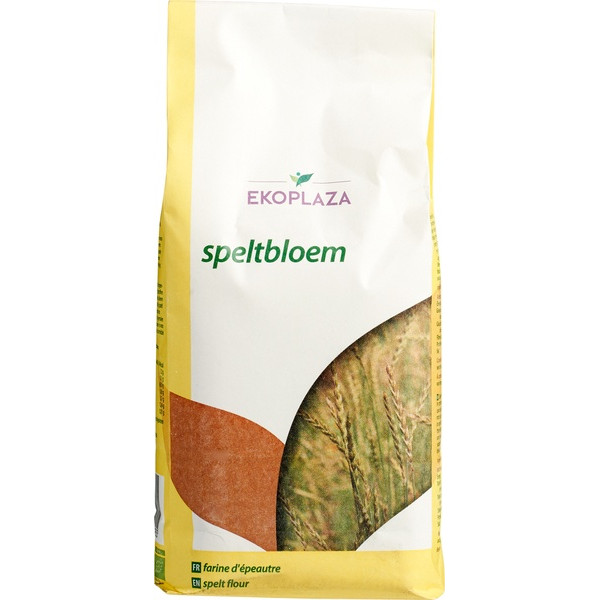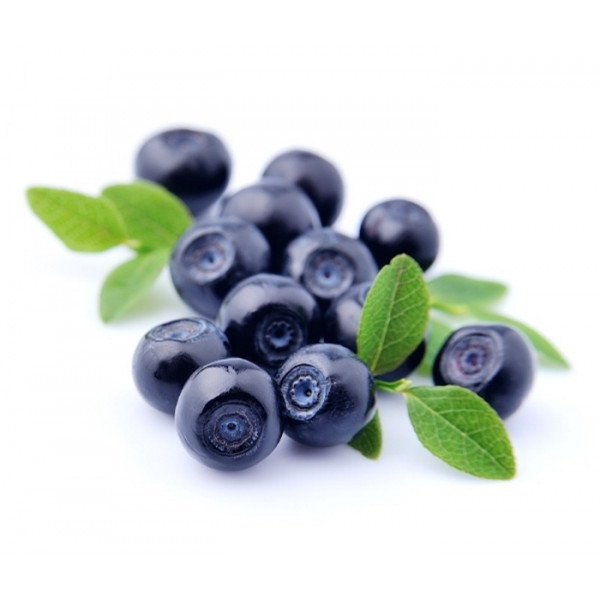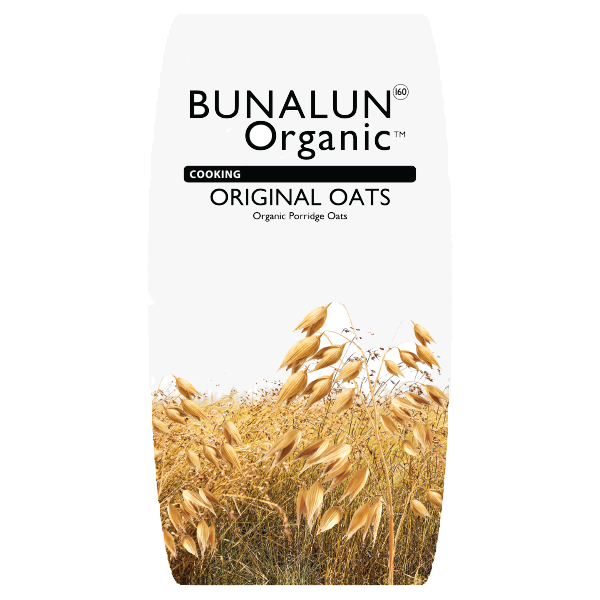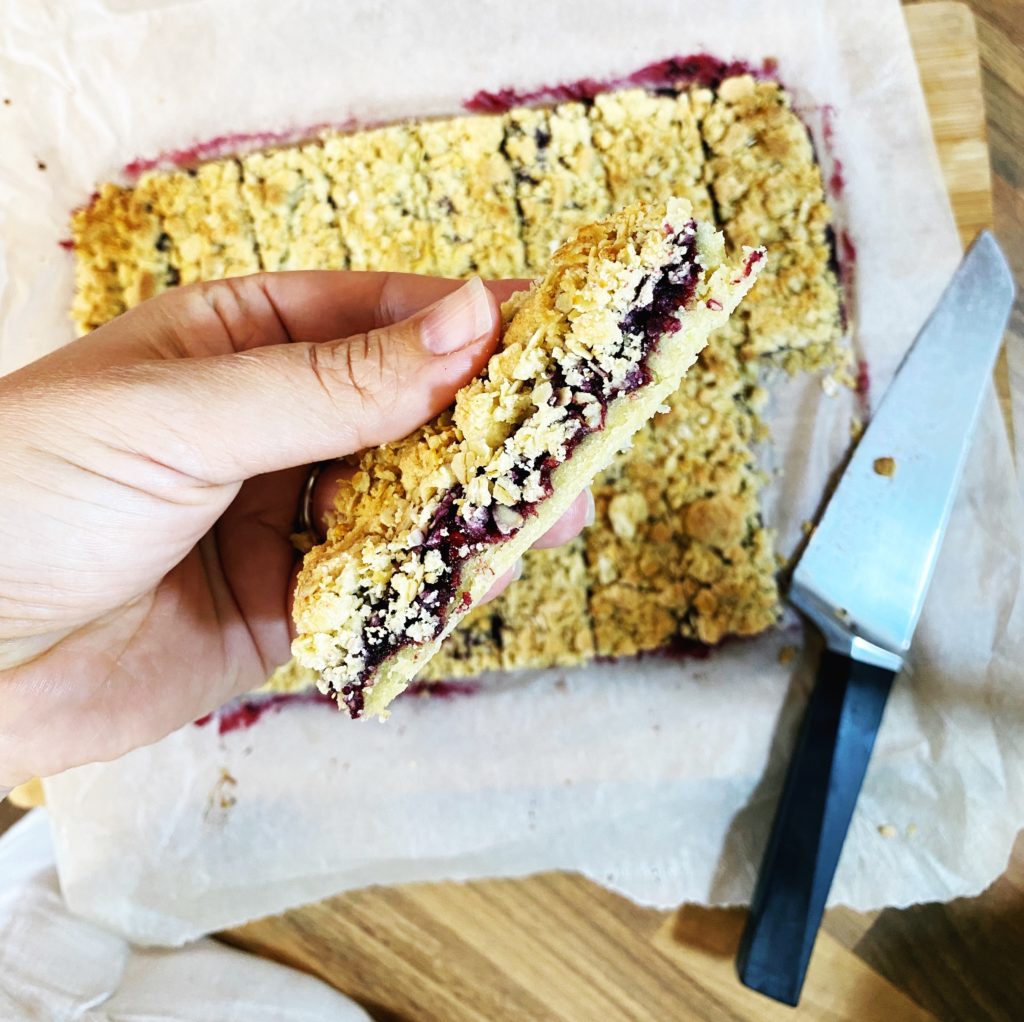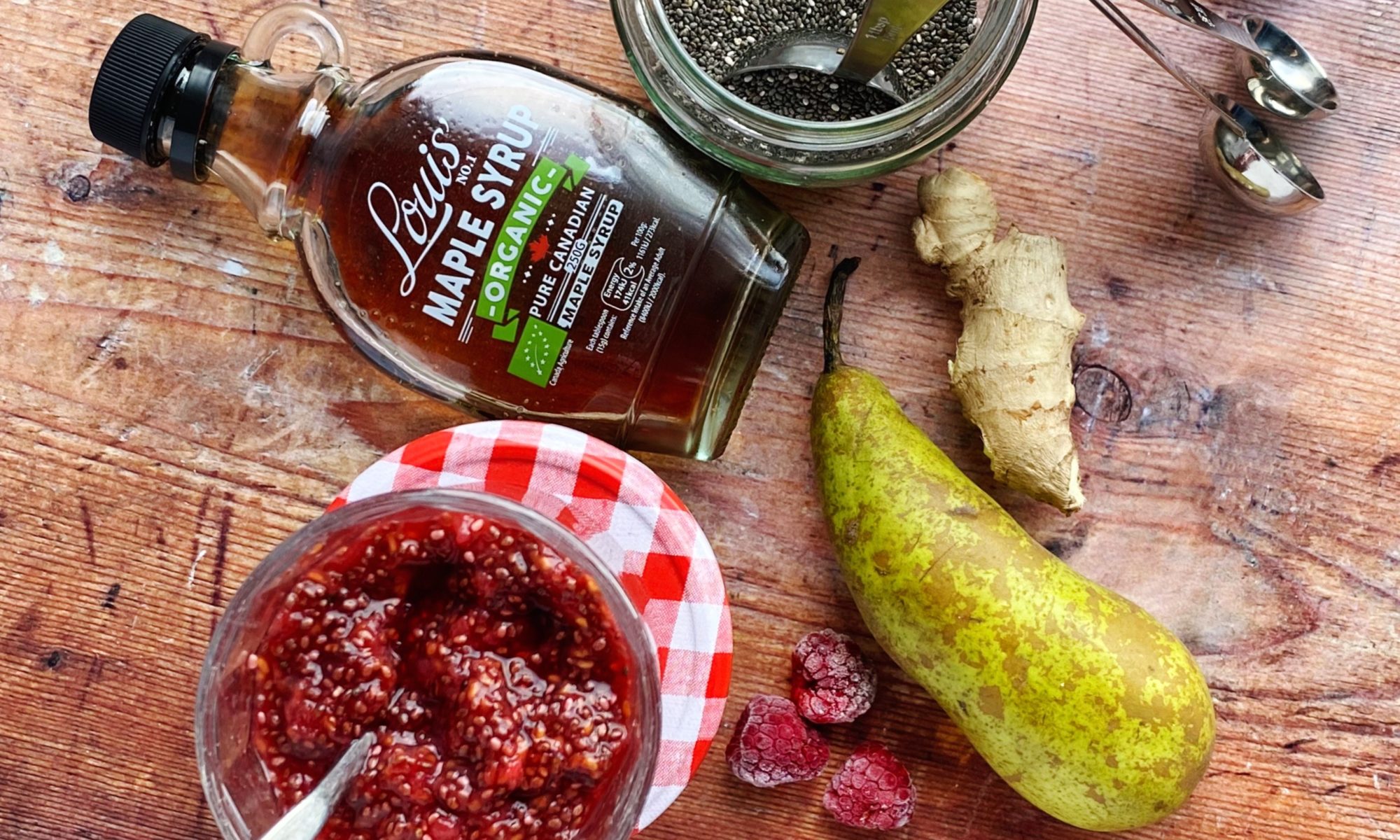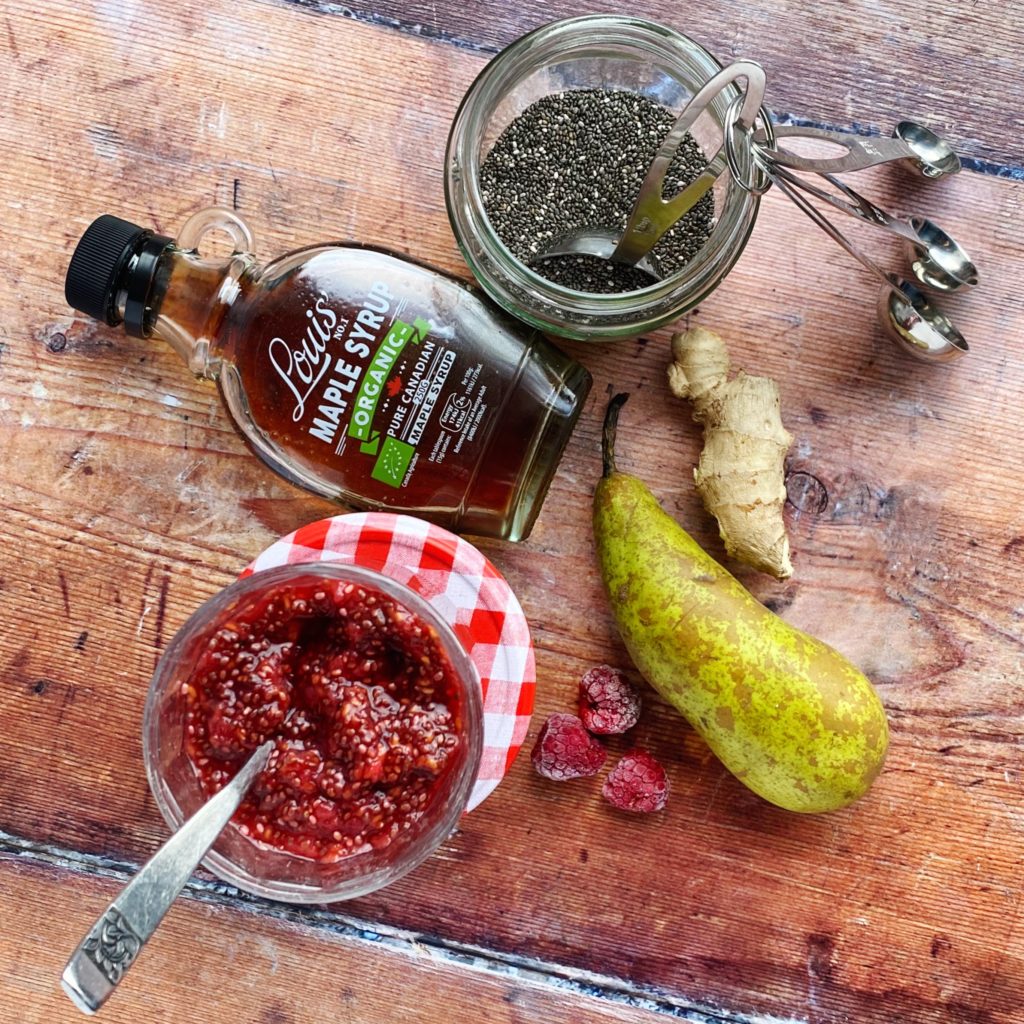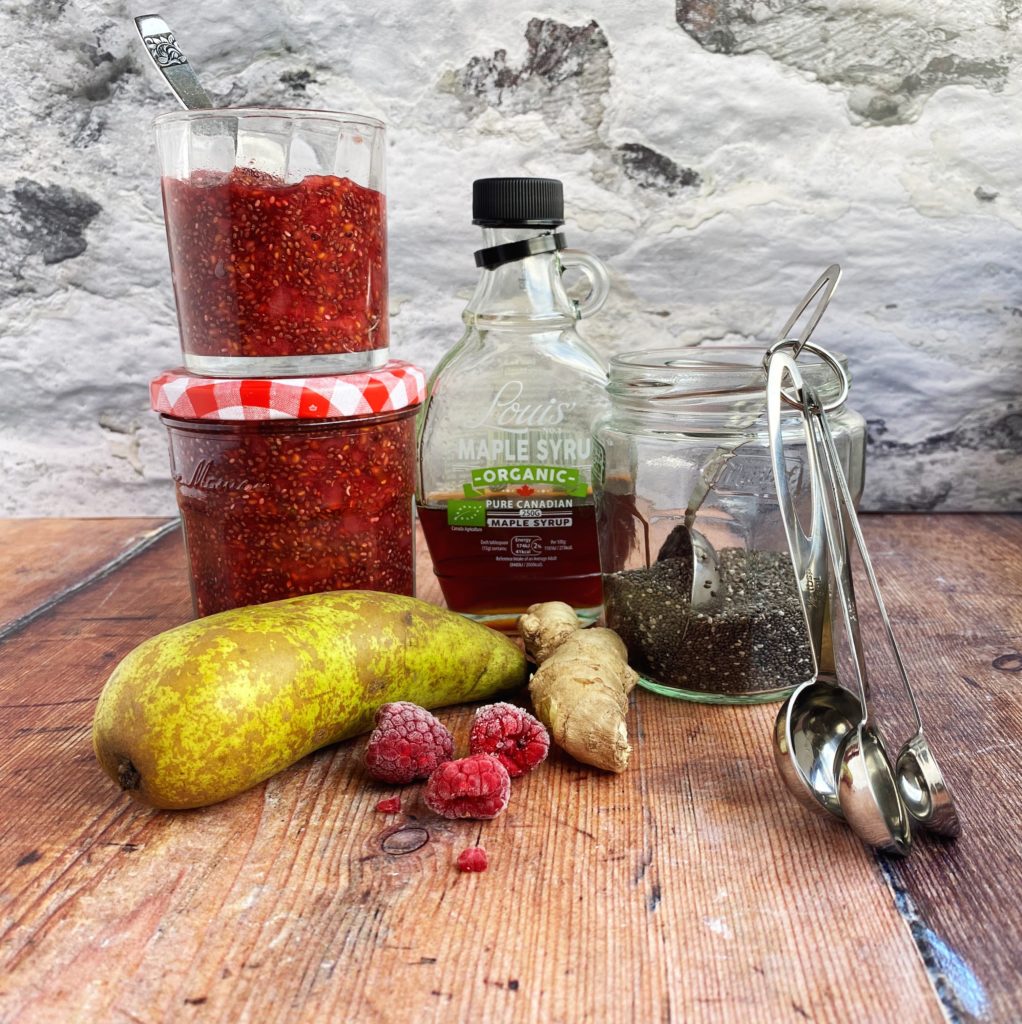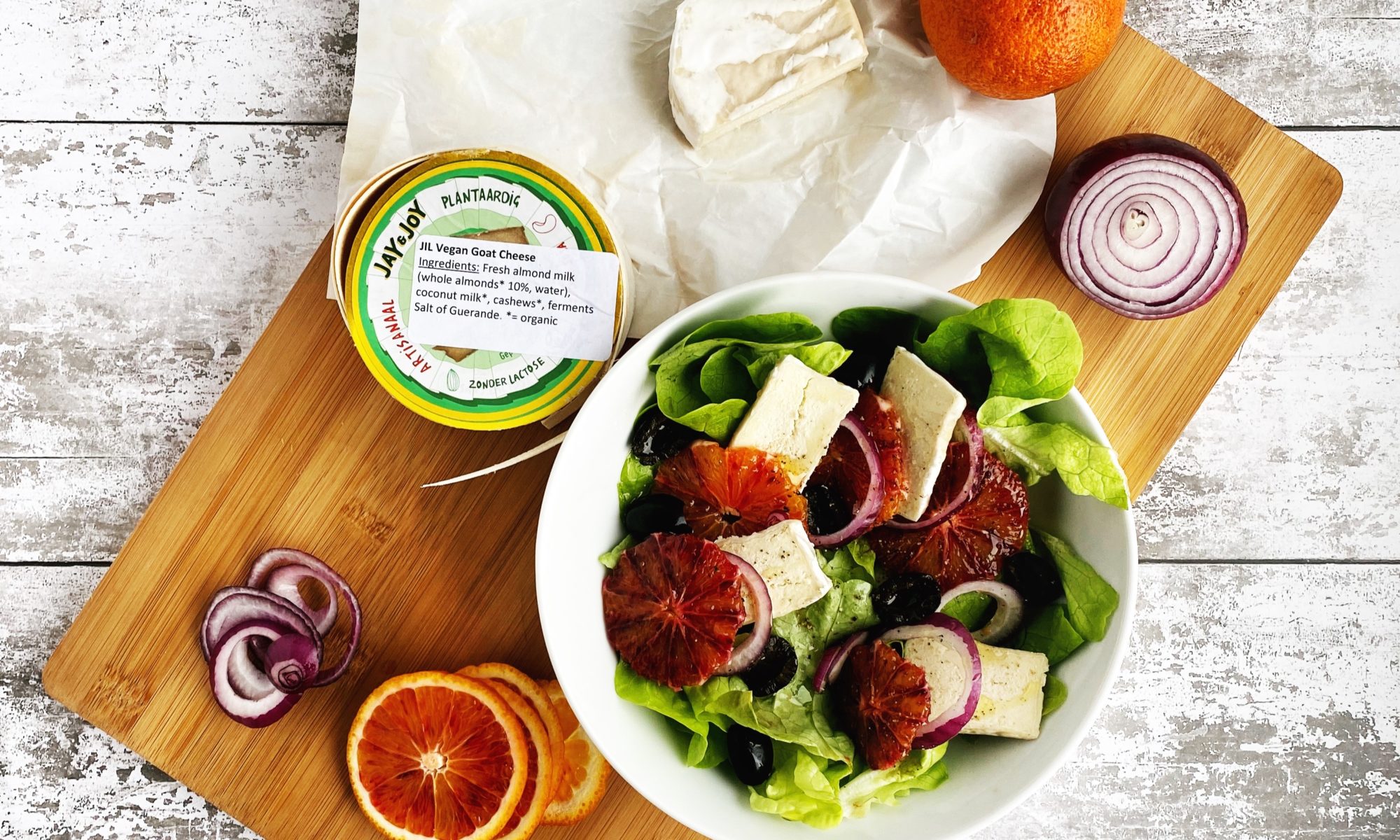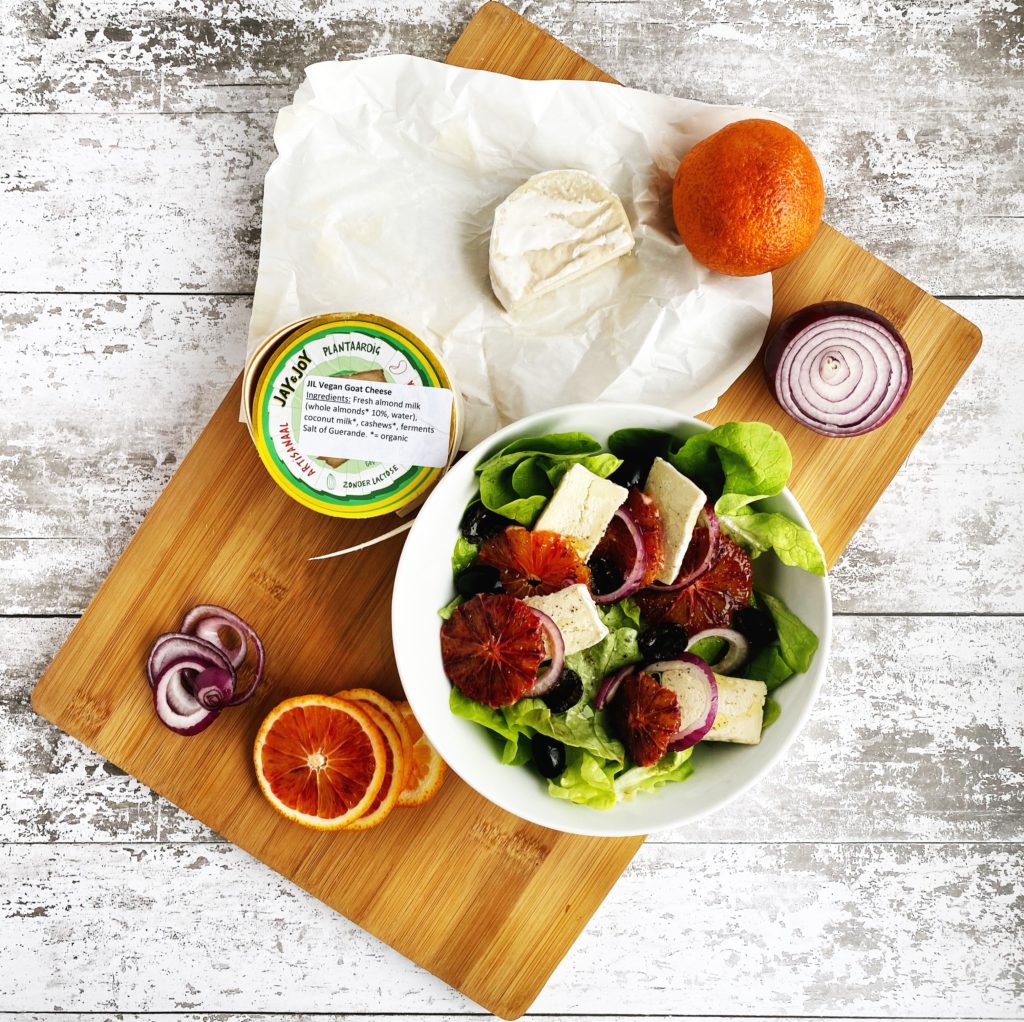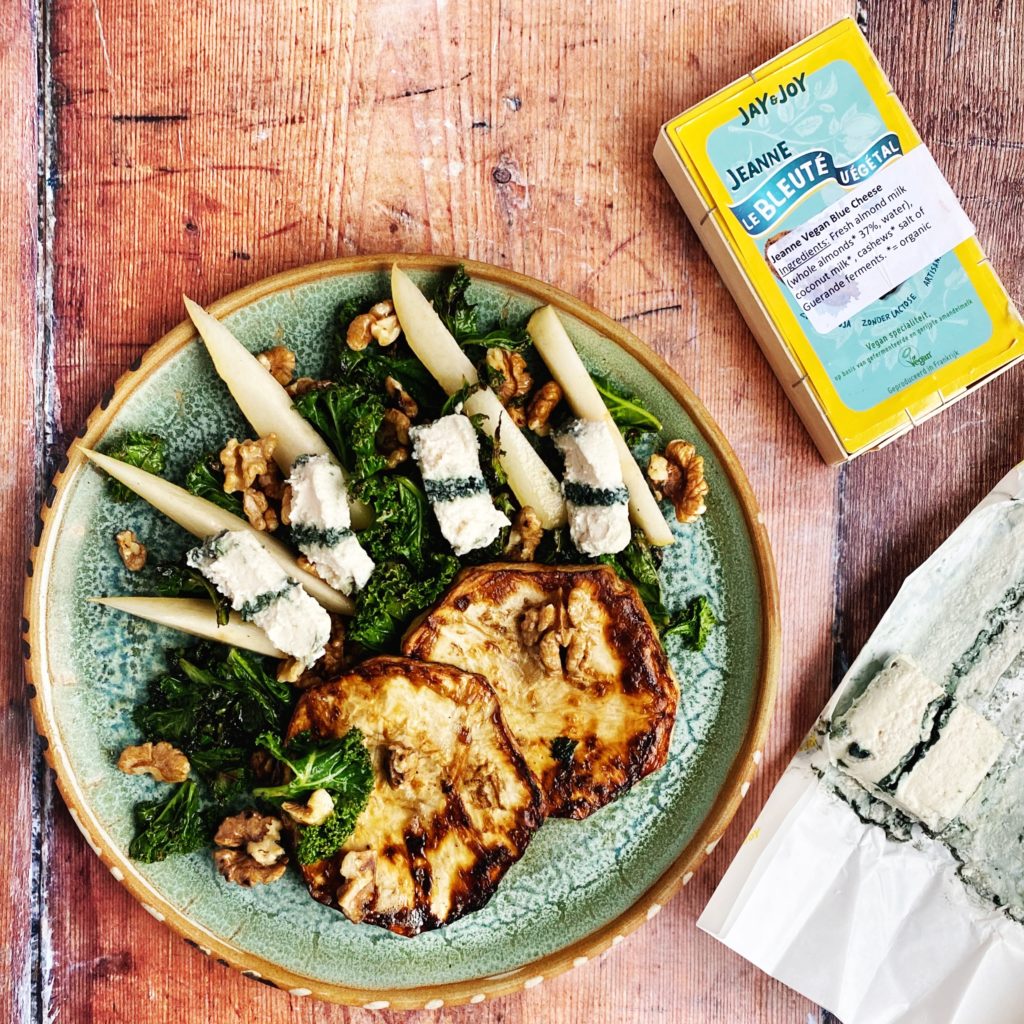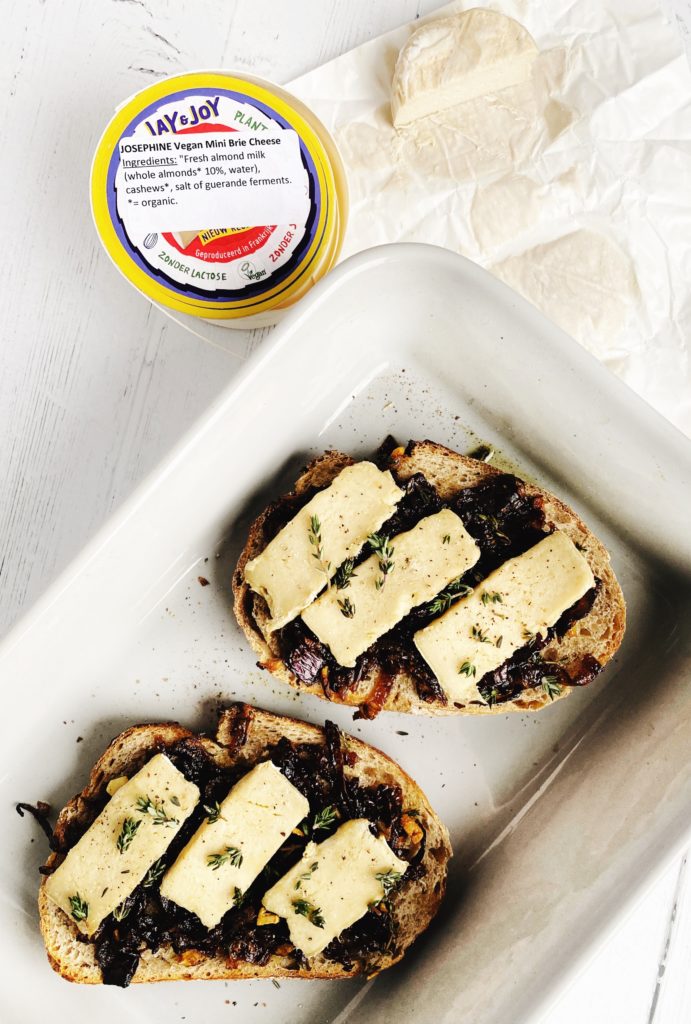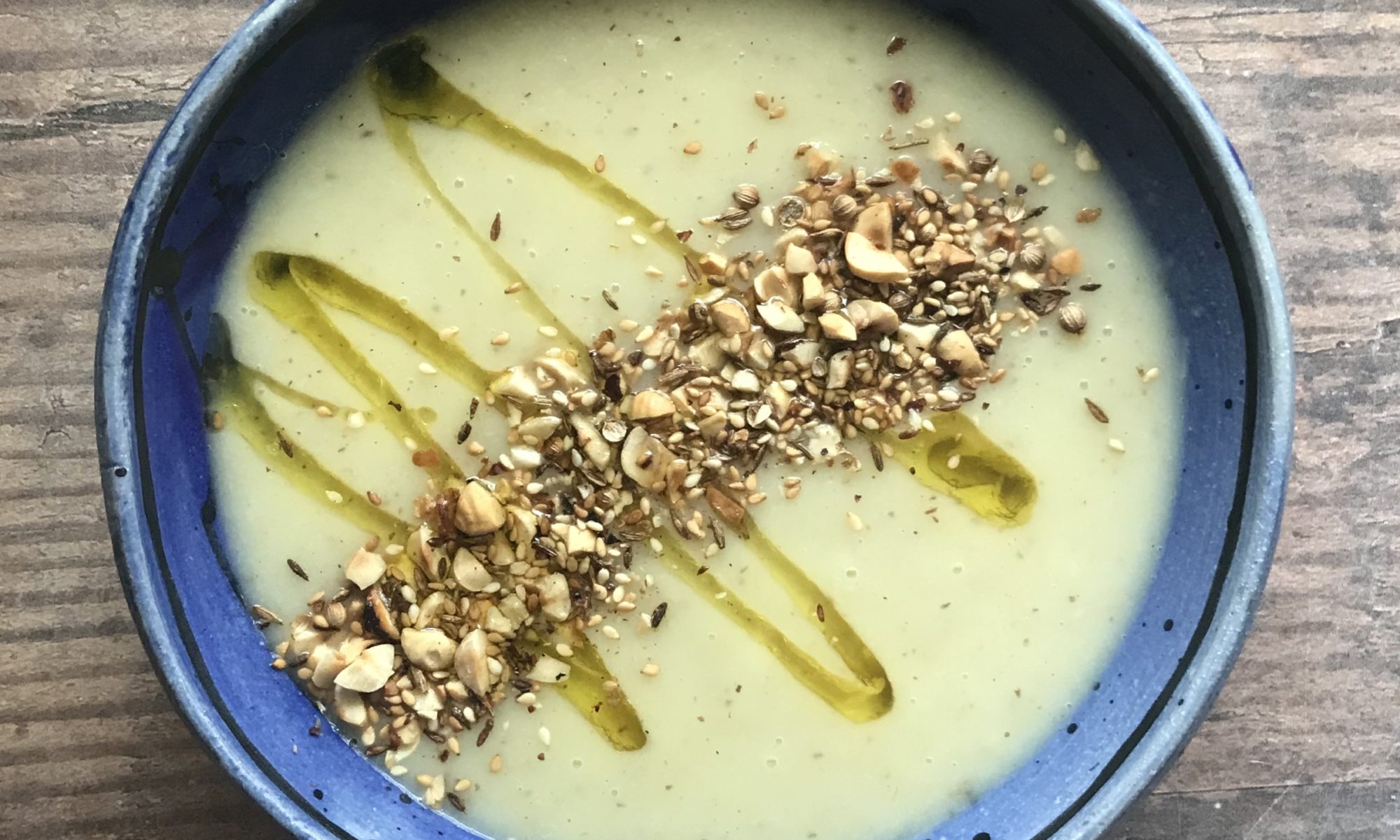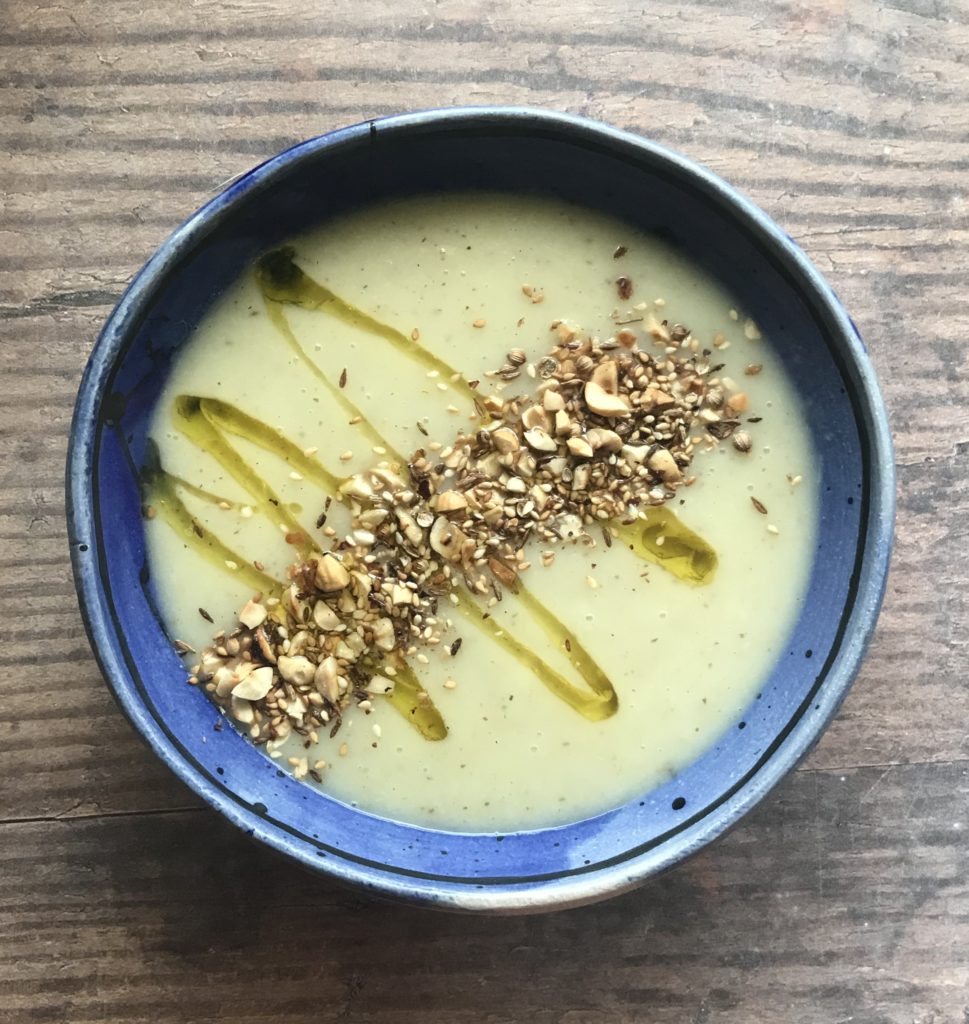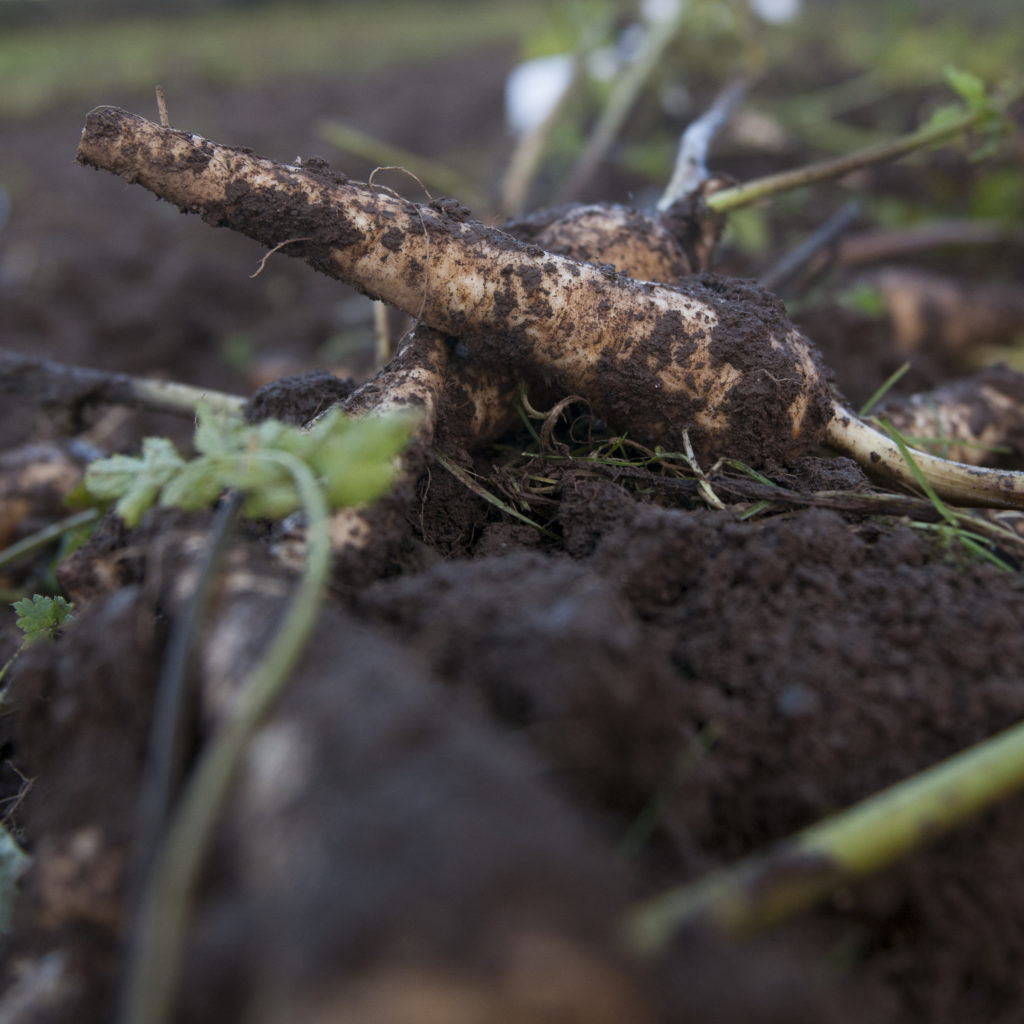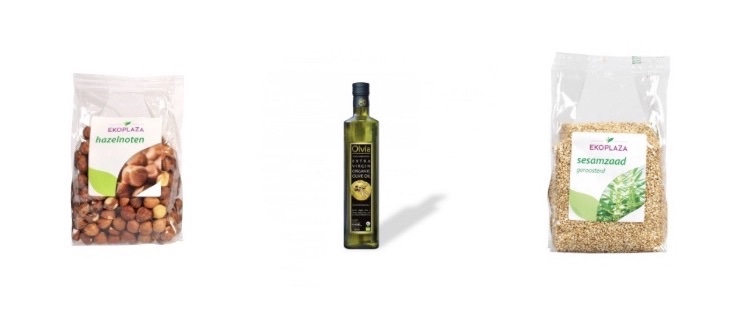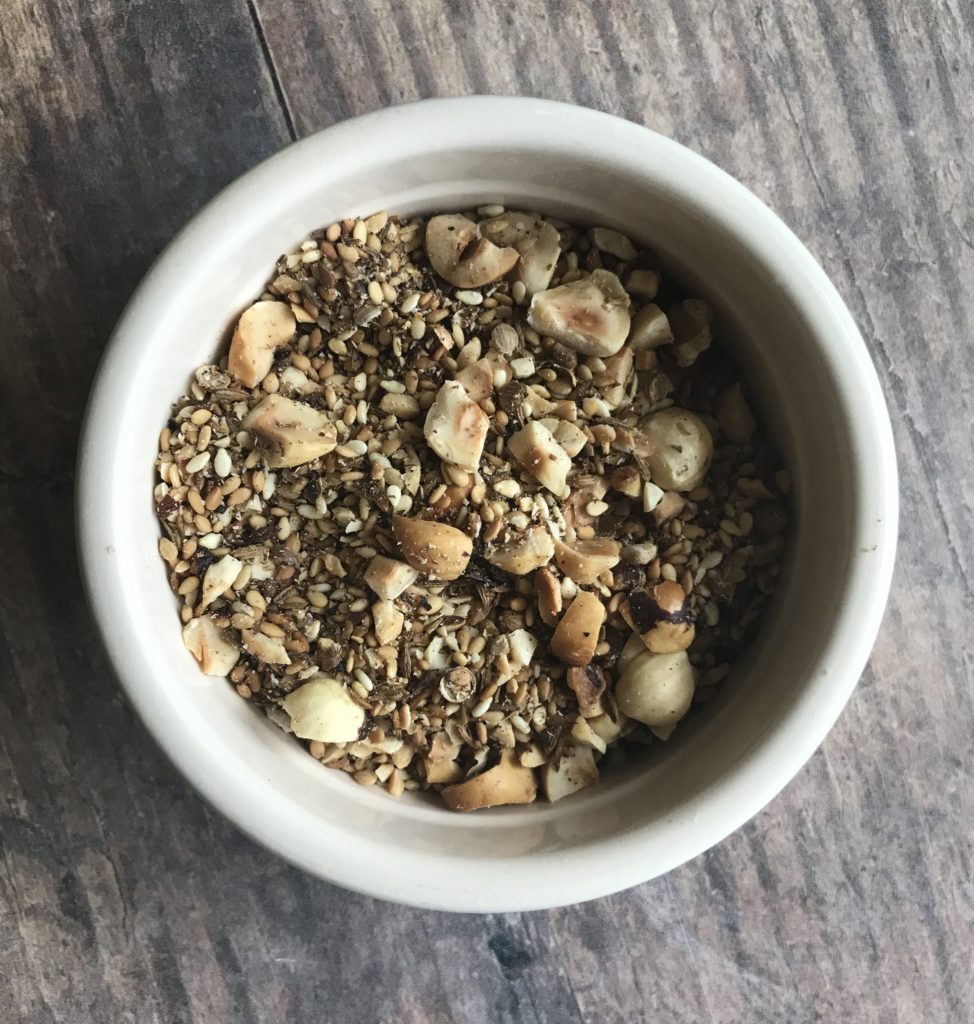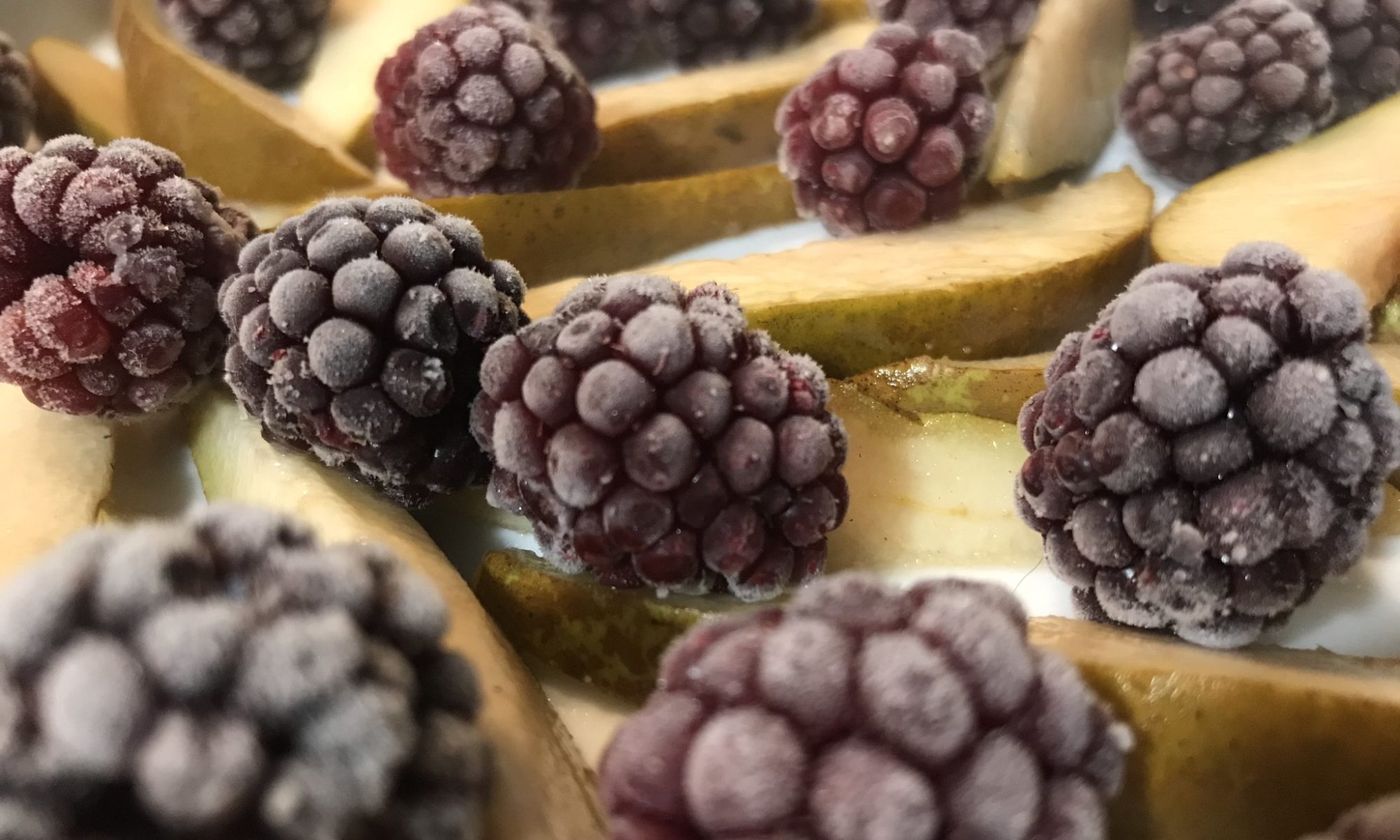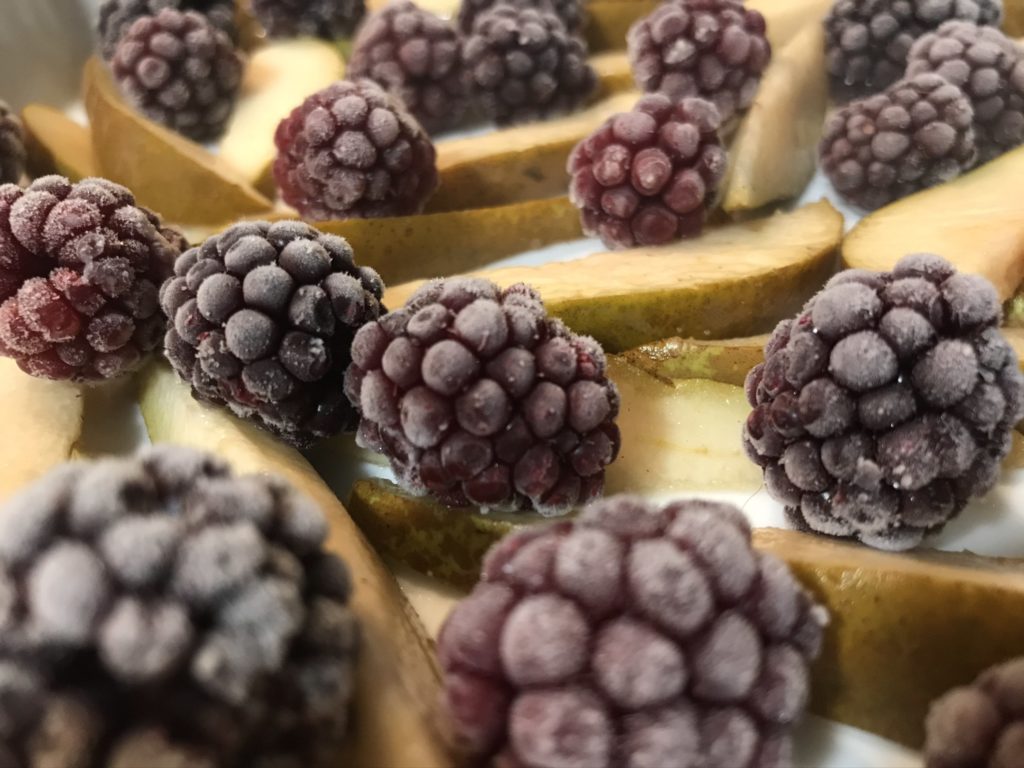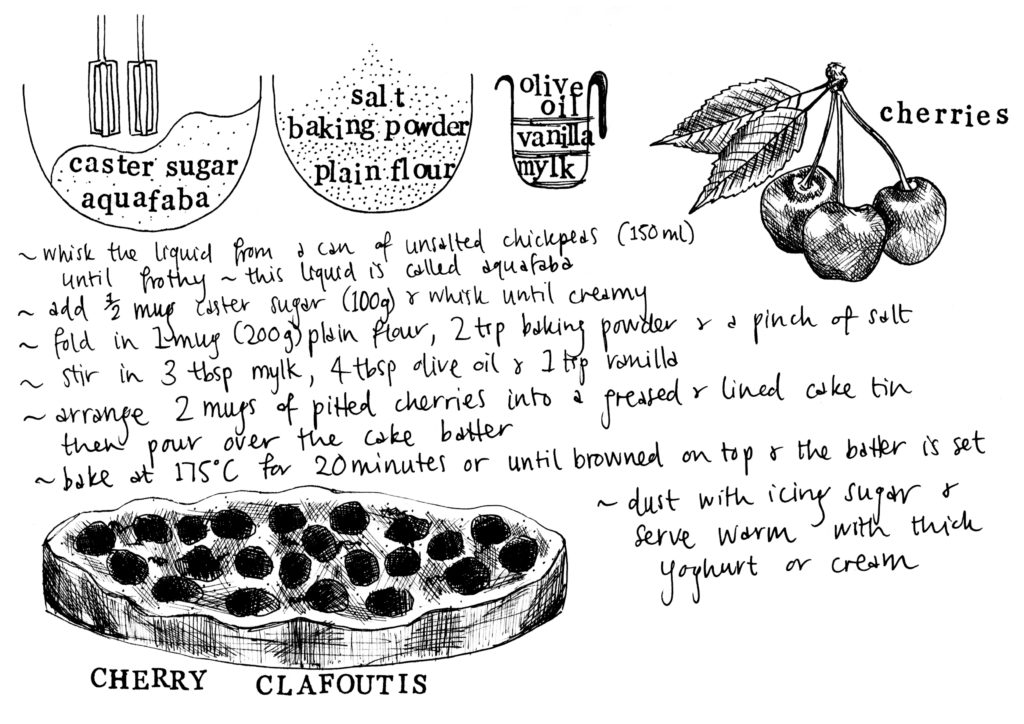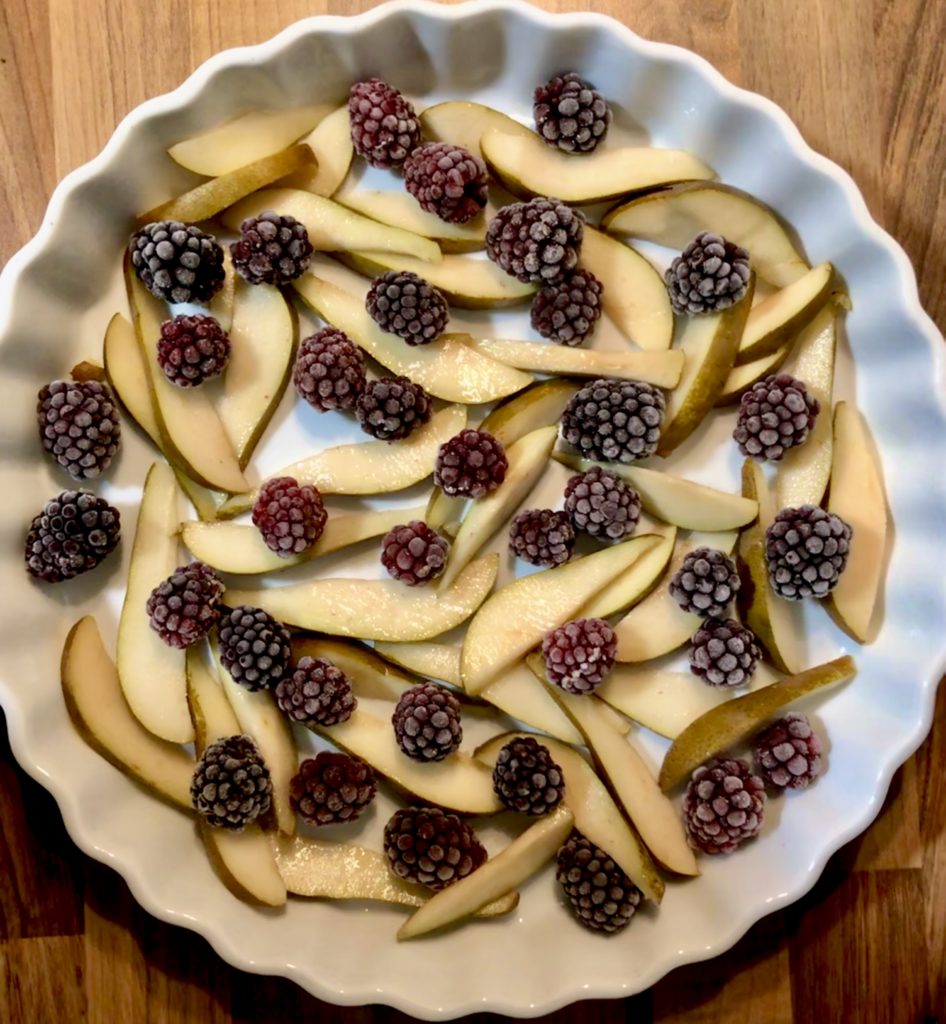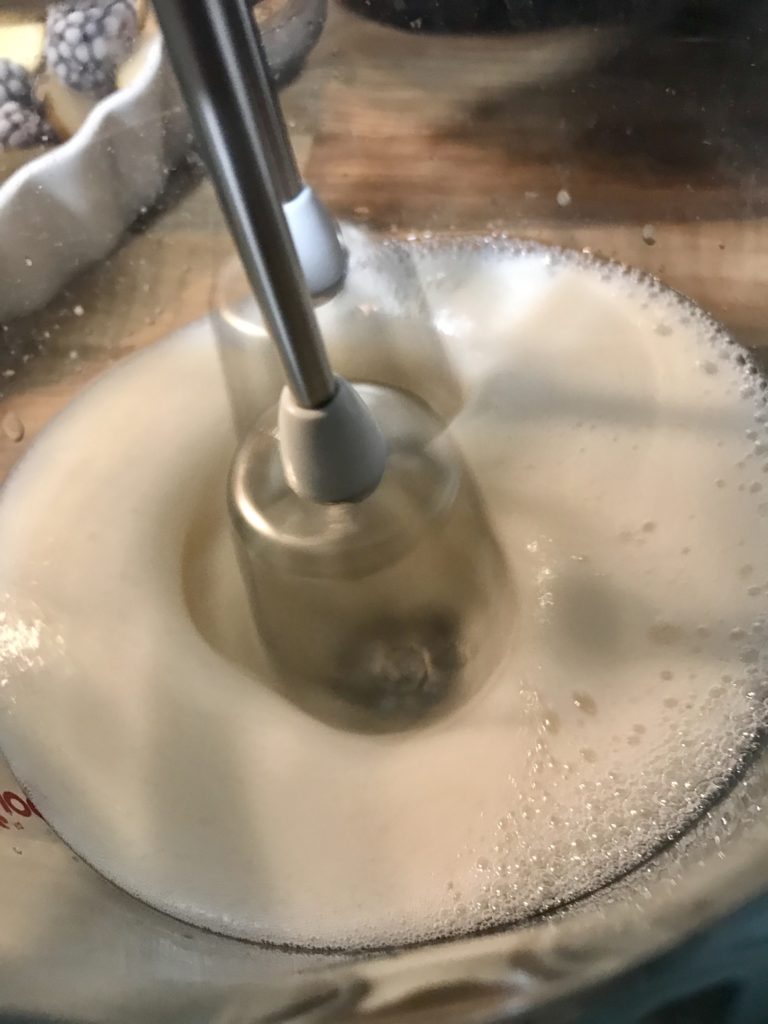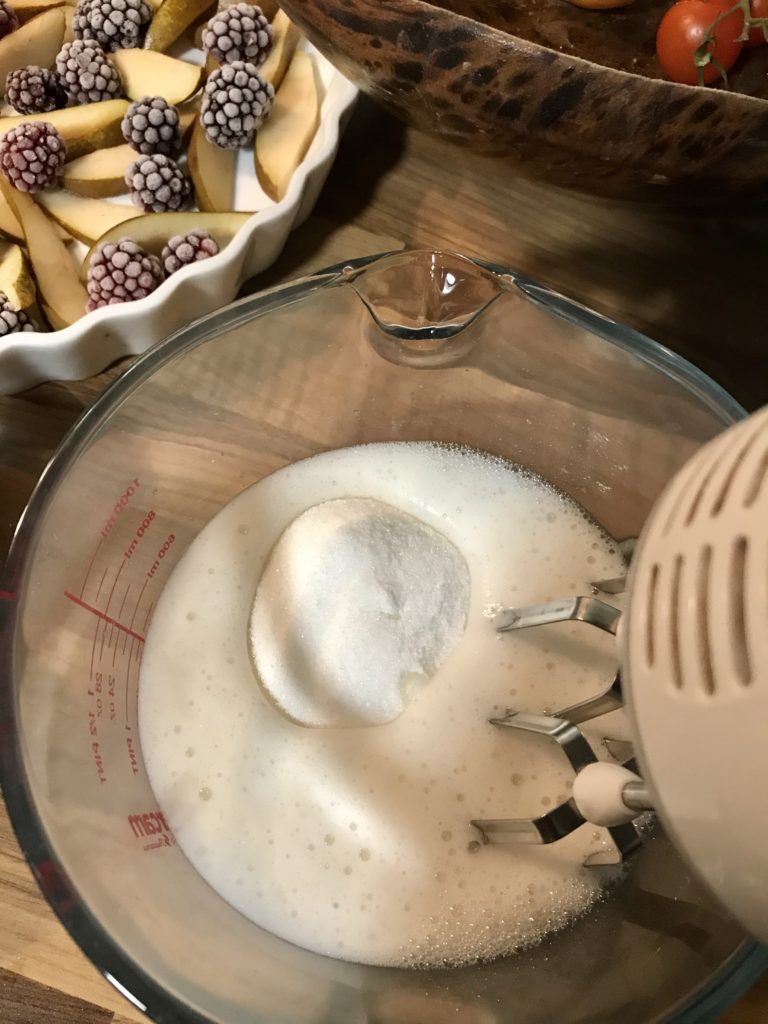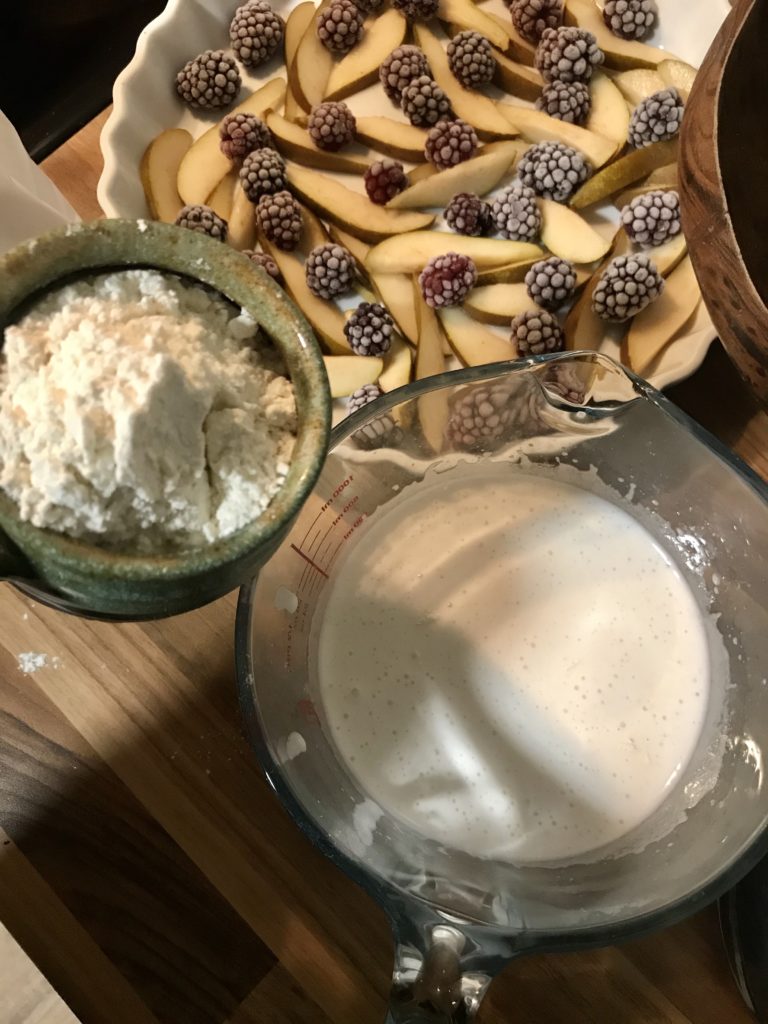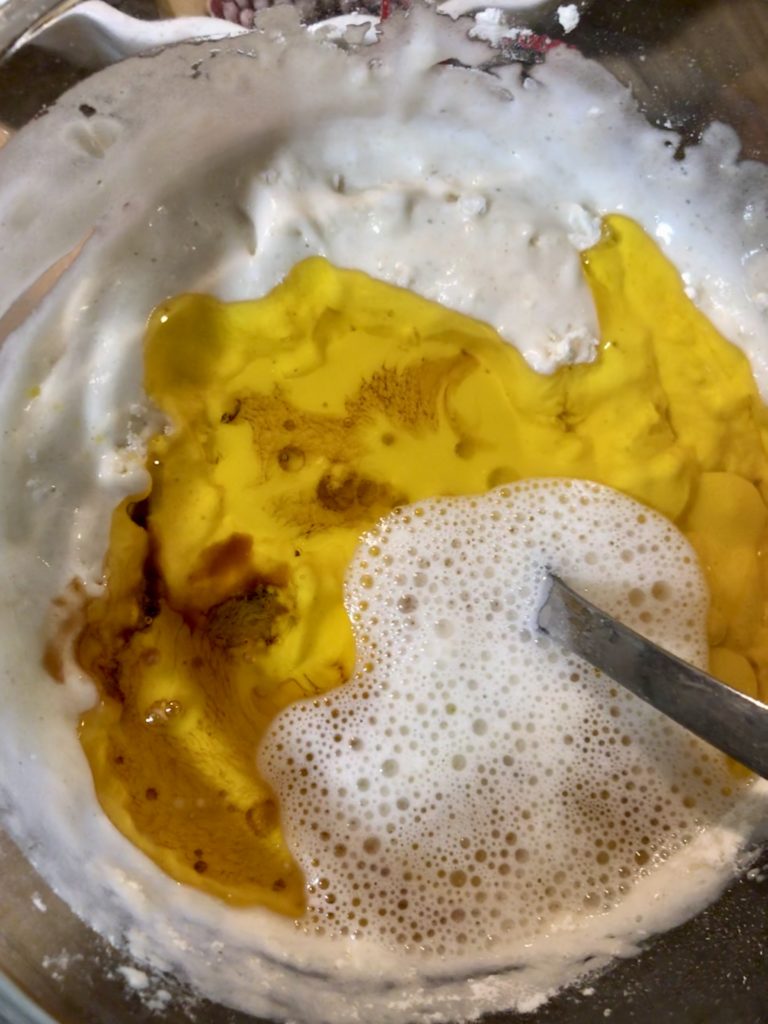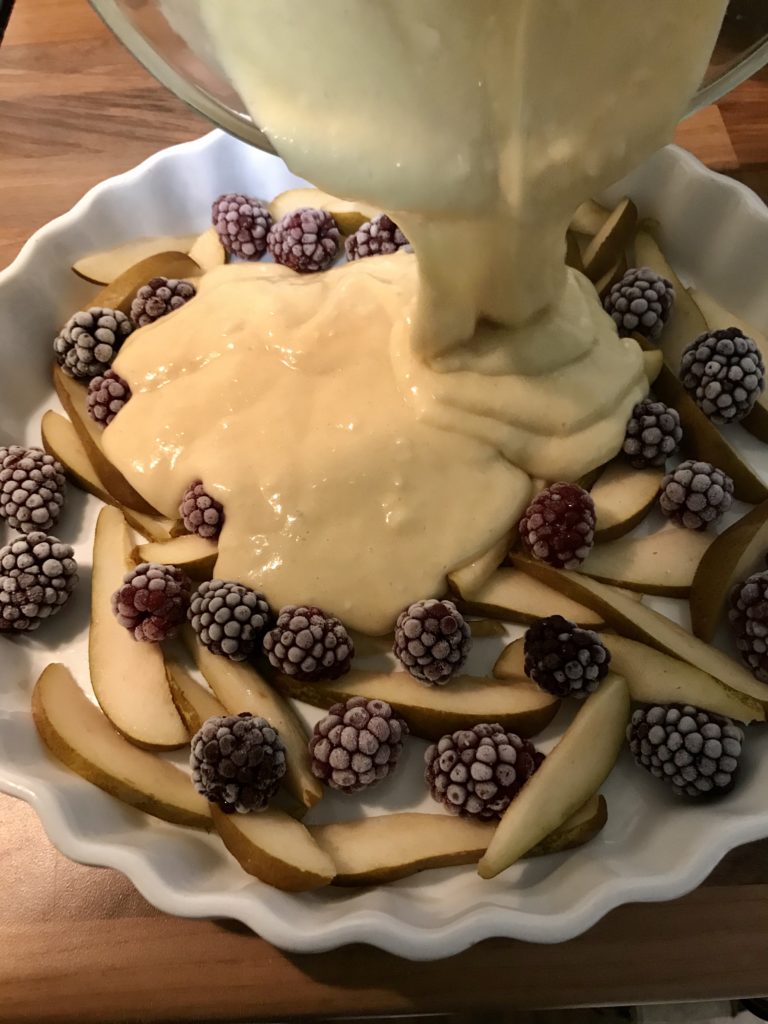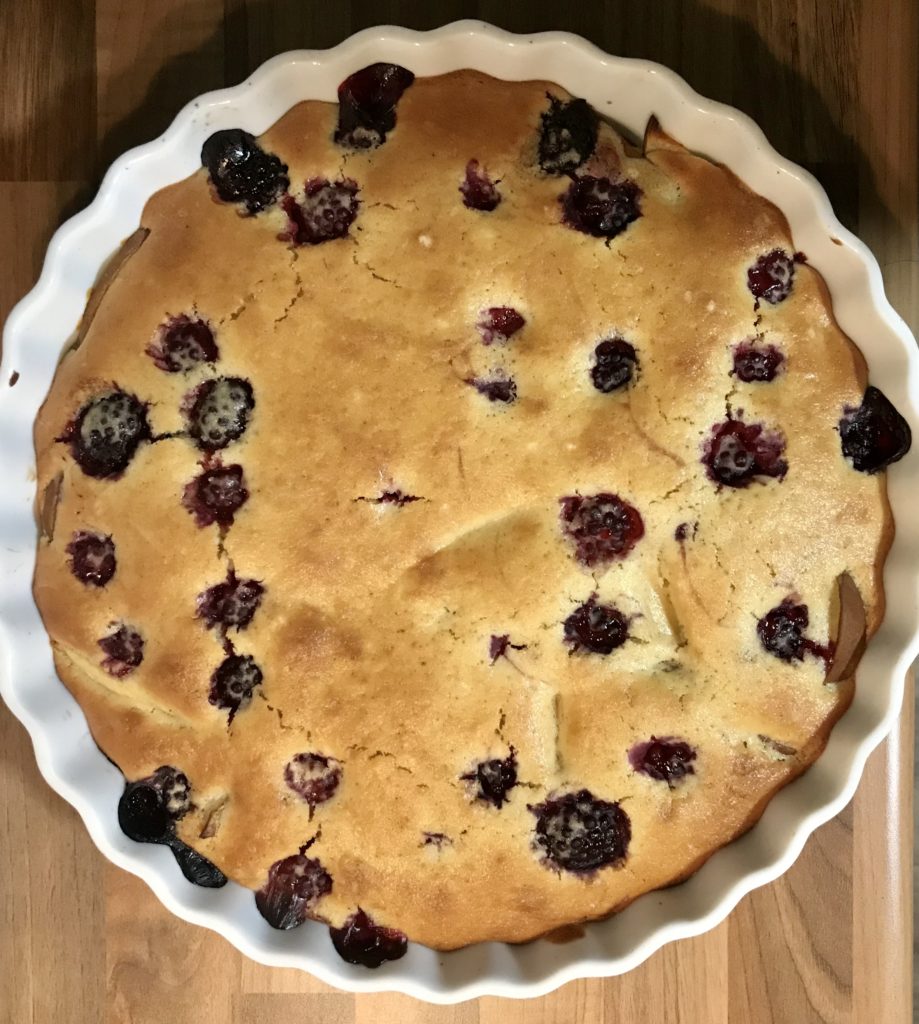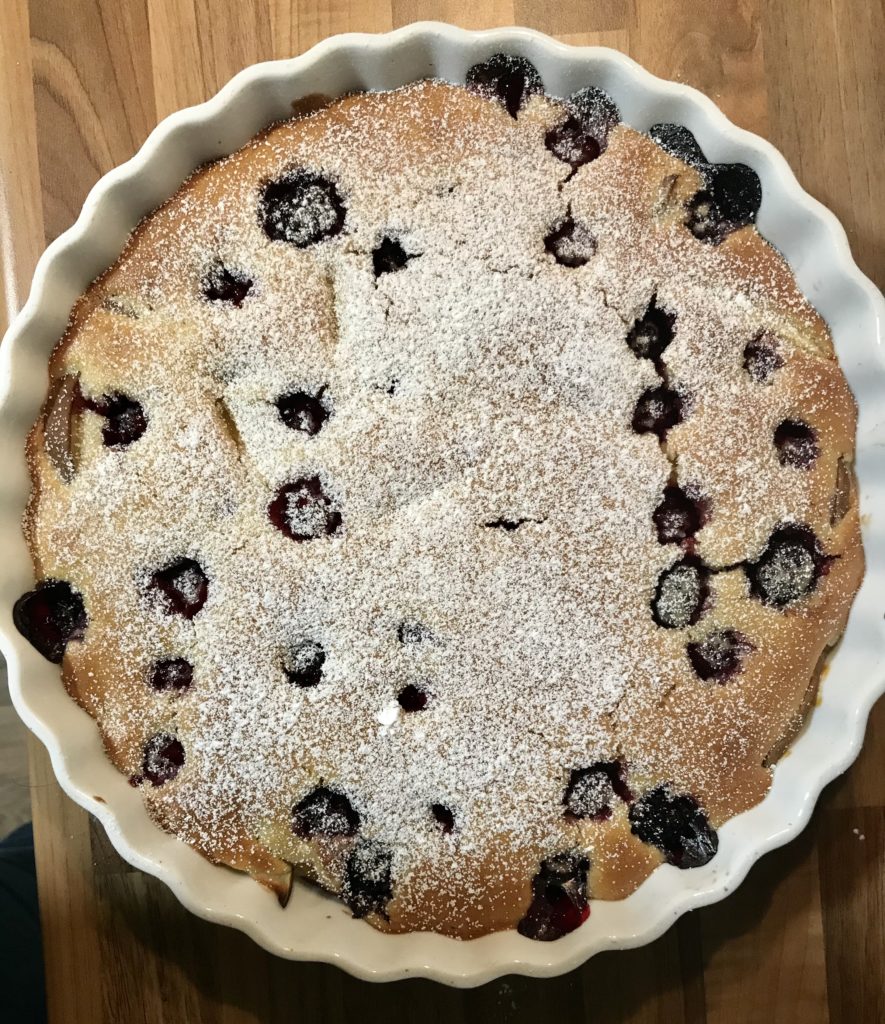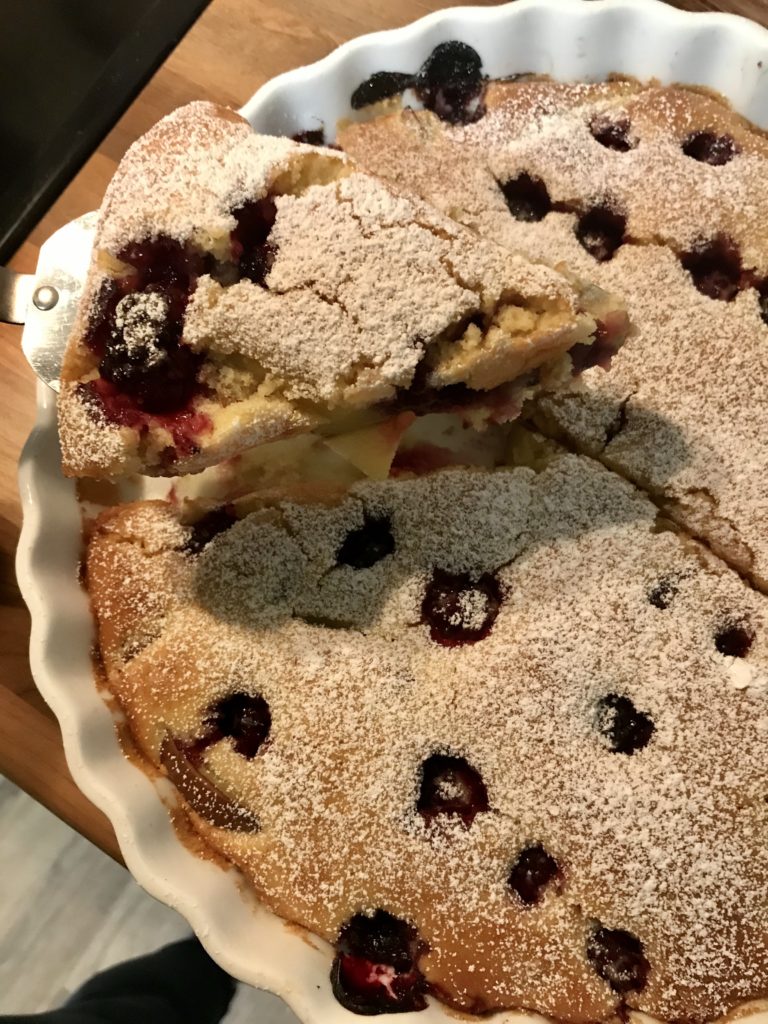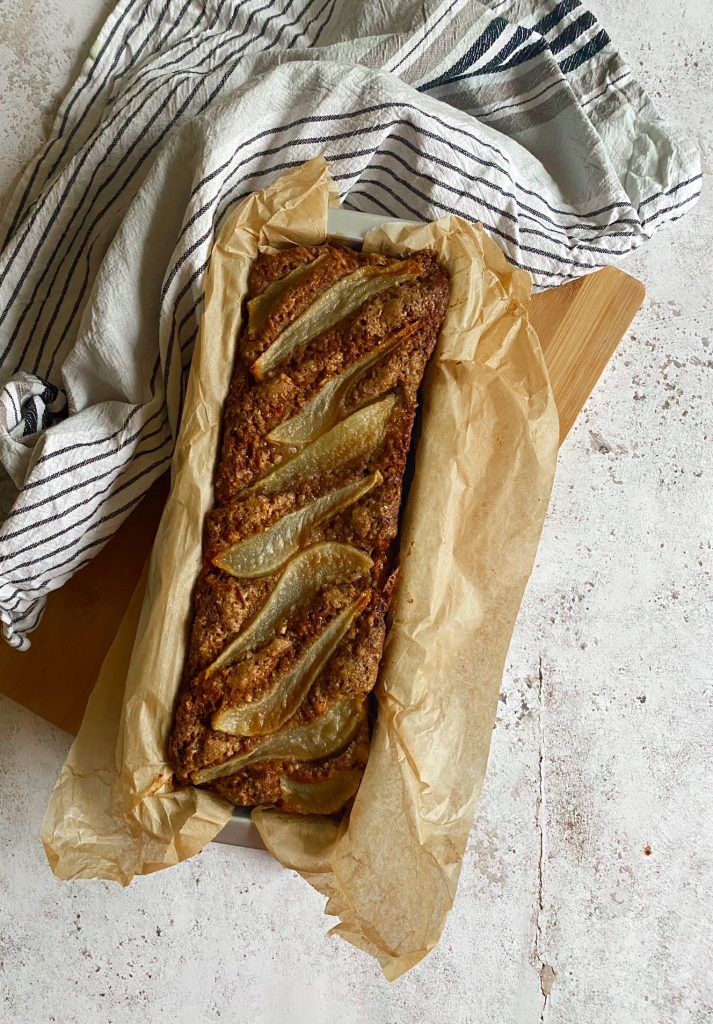
This loaf has everything I love in a cake. Great texture (thanks to the grated parsnips), not too sweet, lovely fruity bursts from the pear slices and it’s deliciously nutty and spiced, perfect with a hot mug of tea on a chilly Autumn afternoon! I hope you enjoy it as much as I am enjoying it right now. You’ll need a food processor to grind your linseeds and hazelnuts, and a grater for the parsnips, but apart from that it’s a pretty straightforward, one bowl cake.
Liz x
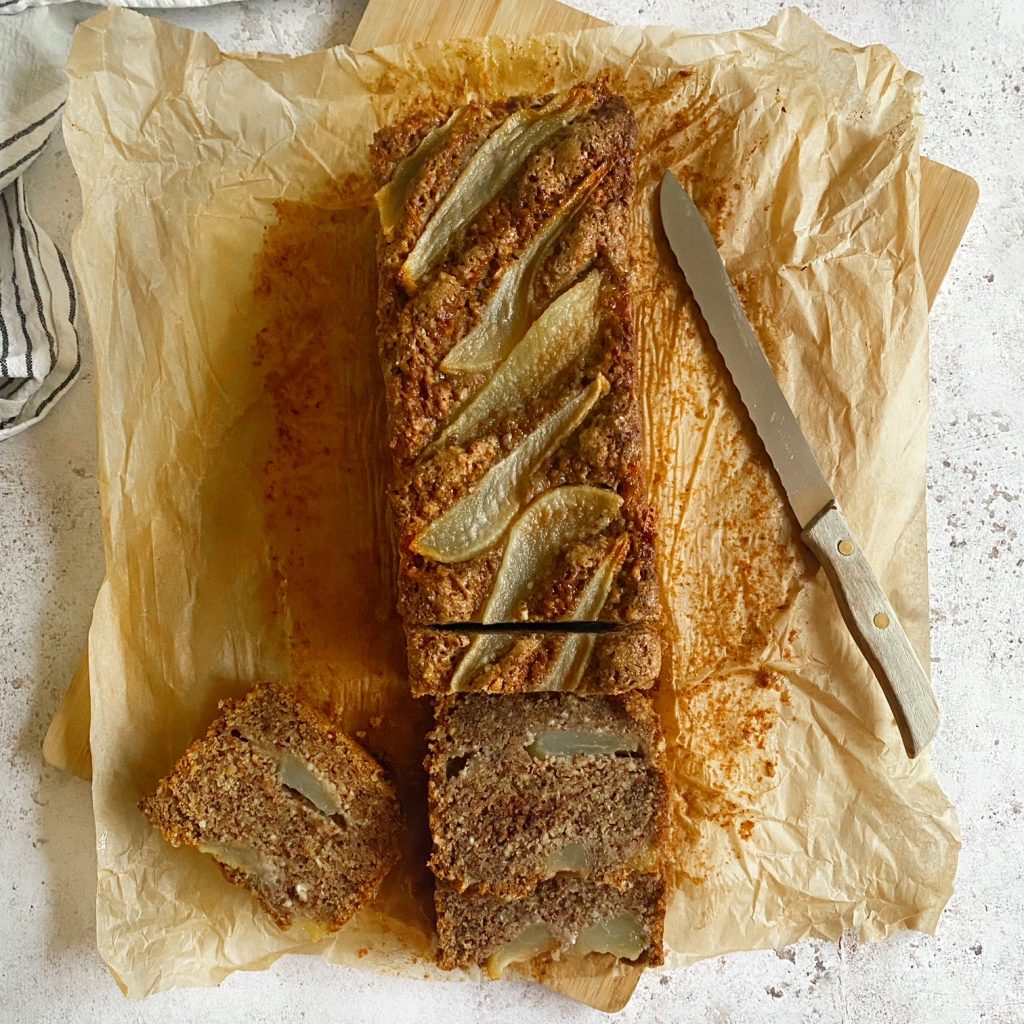
Ingredients
- 3 tbsp flaxseeds, ground into flour in a small food processor
- 1 tsp each: ground cinnamon, ginger and cardamom (or use mixed spice?)
- a pinch of salt
- 150ml vegetable oil
- 250ml oat milk (or any milk you like eg hazelnut)
- 200g sugar
- 250g hazelnuts, ground into a rough flour in a food processor
- 250g plain flour
- 2 tsp baking powder
- 1 tsp bicarbonate of soda
- 250g parsnips, grated
- 2 large pears
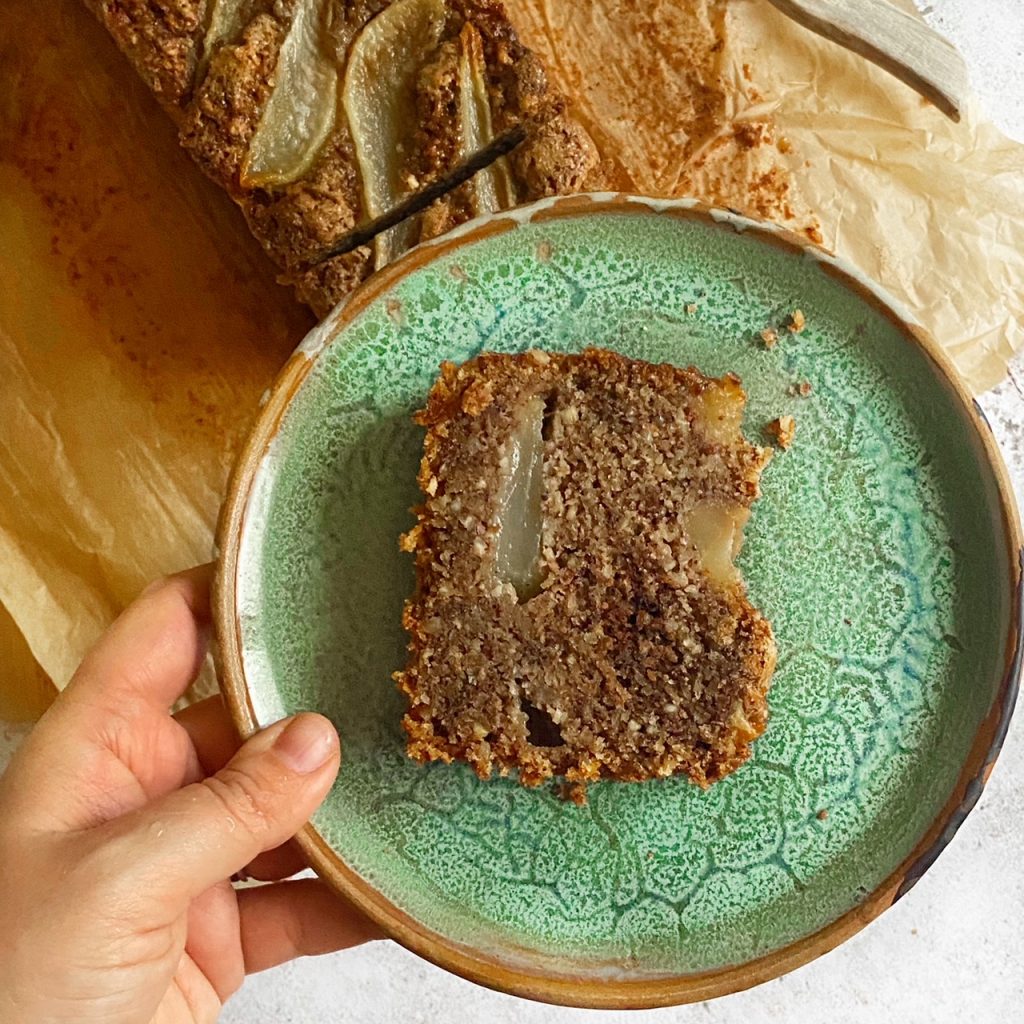
Method
- Pre-heat your oven to 175C and line a large (or two small) loaf tin with baking parchment.
- Mix the ground flaxseeds, spices, salt, oil, milk and sugar in a large mixing bowl and let it sit while you grind the hazelnuts and grate the parsnips. This time will allow the flaxseeds to absorb some liquid and turn ‘eggy’.
- Tip the ground hazelnuts, flour, baking powder and bicarb into the mixing bowl and fold it into the wet ingredients. Don’t over-mix! Just fold it in until it’s fairly well incorporated.
- Then fold in the grated parsnip. You should now have a spoonable, thick batter.
- Peel the pears and cut them lengthways into quarters. Cut out the cores then cut the quarters into long slices.
- Spoon half the batter into the lined loaf tin. Arrange half the pear slices on top, then spoon over the rest of the batter. Smooth it out and place the other half of the pear slices on top. Sprinkle with a few pinches of sugar if you like, then place the tin in the middle of the oven to bake.
- Depending on your oven and the size of your loaf tin, this cake should take roughly 90 minutes to bake. Check it at 40 minutes in, then check on it every 15 minute or so after that. It will still be deliciously moist inside because of the pear slices and parsnip, but not wet. You can test it with a skewer. When it’s done to your liking, allow it to cool in the tin. Then carefully move it to a chopping board and enjoy in thick slices with a hot cuppa!
